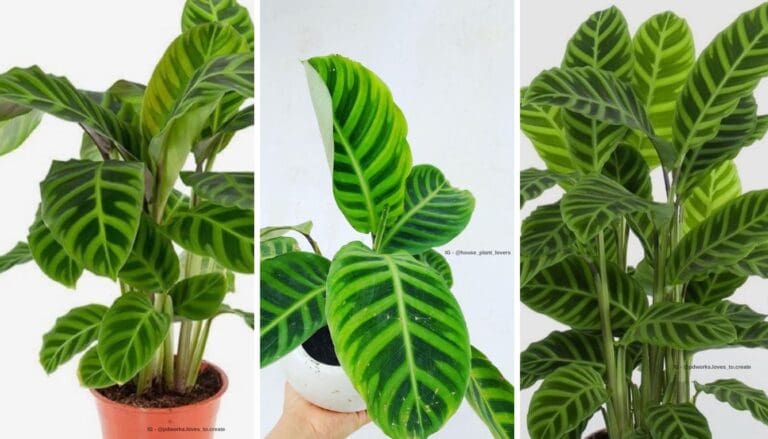7 Plant Watering Schedules That Actually Work in Summer
Keeping plants healthy when the weather heats up? Honestly, it’s not always easy. Summer dries out soil so fast, and sometimes I catch myself wondering—am I watering too much, or not enough?
I’ve stumbled onto some easy watering schedules that actually help my plants stay green and happy. Sticking to a simple routine makes things way less stressful, and my garden’s never looked better.
Please note: Simplify Plants is reader-supported. As an Amazon Associate, I earn from qualifying purchases made by our readers with no extra cost added to you all! Some links in the post are affiliate links and I get a commission from purchases made through links in the post.
1) Water early in the morning before sunrise
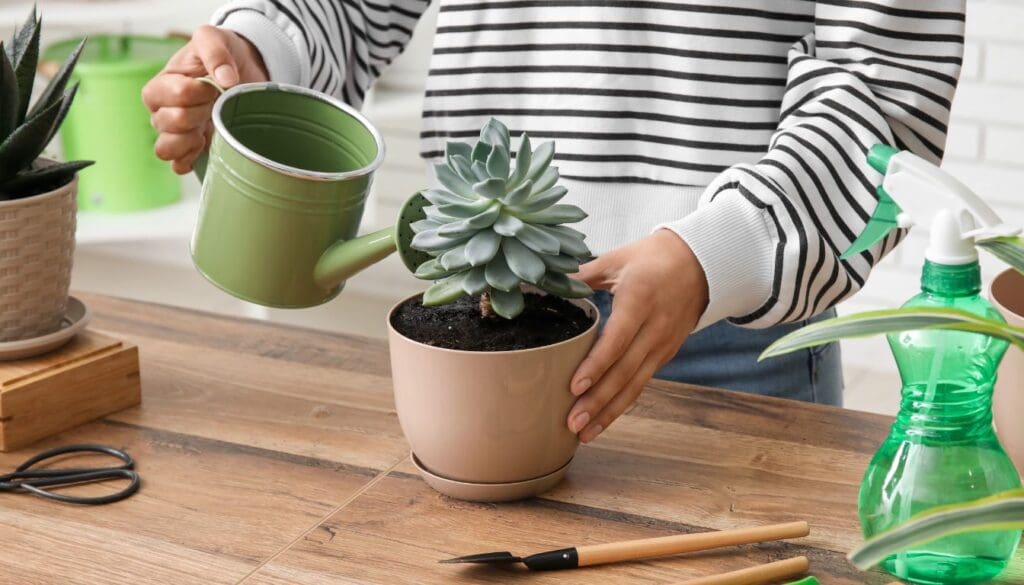
I always water my plants early in the morning before sunrise. The soil gets a chance to soak up water before the heat kicks in.
Plants use water more efficiently in cooler temps. There’s a lot less evaporation at that time, so more water actually reaches the roots.
I’ve noticed that watering early helps prevent diseases too. Leaves dry out during the day, which means less chance for mold or fungus.
It’s easier for me to remember to water in the morning—it’s just part of my routine now. I grab my watering can and enjoy a bit of quiet before the day gets busy.
If I water in the middle of the day, most of it just evaporates. Plus, the sun can burn wet leaves, so I skip midday watering whenever I can.
Starting early lets me catch any problems, like wilted leaves or sneaky bugs. It’s a peaceful way to check in with my plants.
Consistent morning watering really keeps my plants happier through the summer. It’s a small habit, but it makes a big difference.
2) Use a drip irrigation system for consistent moisture
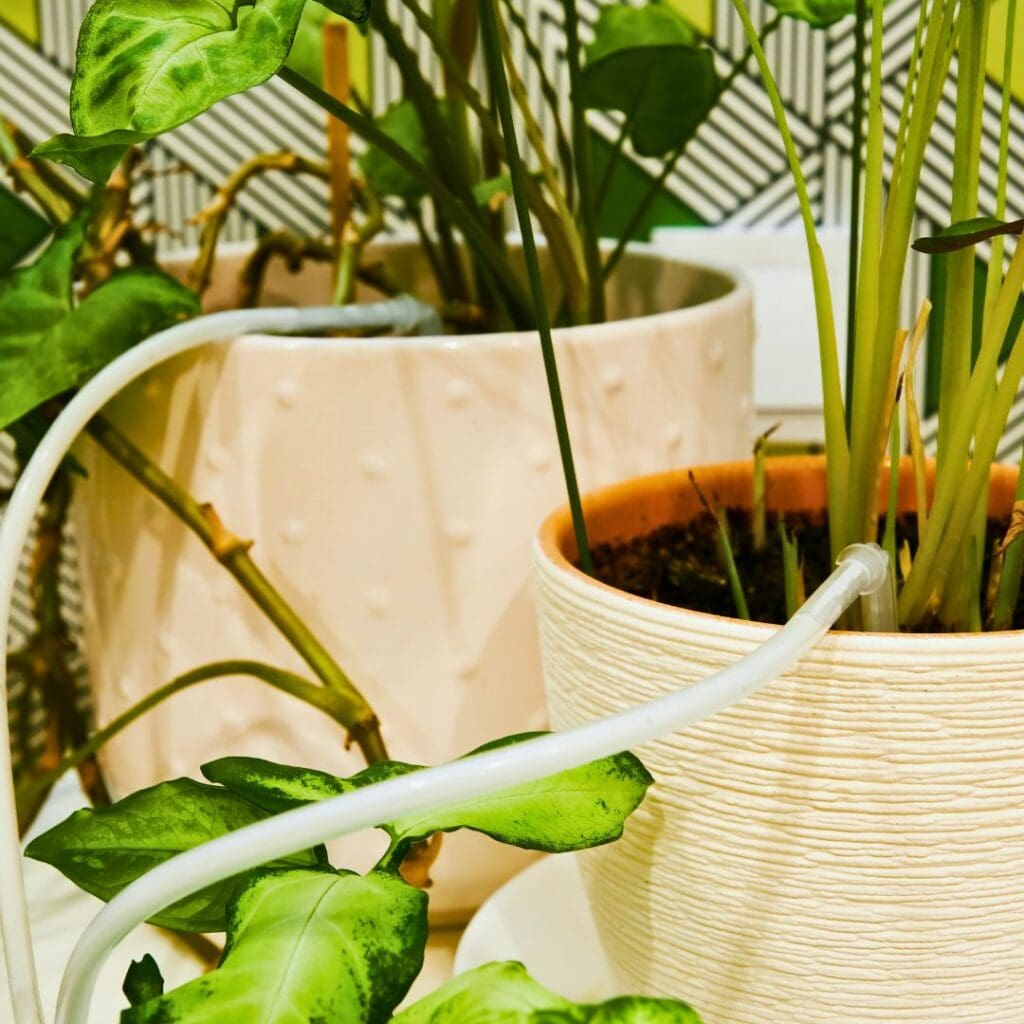
A drip irrigation system has been a game-changer for me in the summer. Water drips slowly to the roots, right where it matters.
No more dragging hoses around every day. With automatic timers, I just set it once and let it do its thing.
Using drip irrigation saves water by cutting down on waste and keeping leaves dry. That means fewer diseases, too.
My plants seem less stressed—they don’t get too dry or too soggy. The soil stays evenly moist, and honestly, flowers and veggies just grow better.
The tubes are easy to move, so I can set them up for all kinds of plants, even in pots. Setup doesn’t take long, and it makes watering in summer so much simpler.
I also like that I can add liquid fertilizer to the system. Water and food at the same time? Super convenient.
3) Water deeply once every 3-4 days

I’ve found it’s best to water deeply every three or four days during summer. That way, water actually reaches the roots instead of just wetting the surface.
Deep watering encourages stronger root growth. When I water too often but only a little, roots stay shallow and dry out fast.
I check the soil with my finger—if it’s moist a couple inches down, I wait another day. If not, it’s time to water.
This works for most of my garden—tomatoes, peppers, flowers. Super hot days or sandy soil might mean watering a bit more often, though.
Watering deeply but less often really saves me time and water. I don’t have to be out there every day, and my plants still thrive.
I use a slow stream or just let the hose sit at the base for a few minutes. Drip irrigation helps if I’m feeling lazy.
If leaves wilt or the soil cracks, I check if I should water sooner. Otherwise, I let the top dry out a bit between waterings.
This method has made my plants a lot tougher in the summer heat. Deep watering every 3-4 days really gives roots what they need.
4) Mulch around plants to retain soil moisture
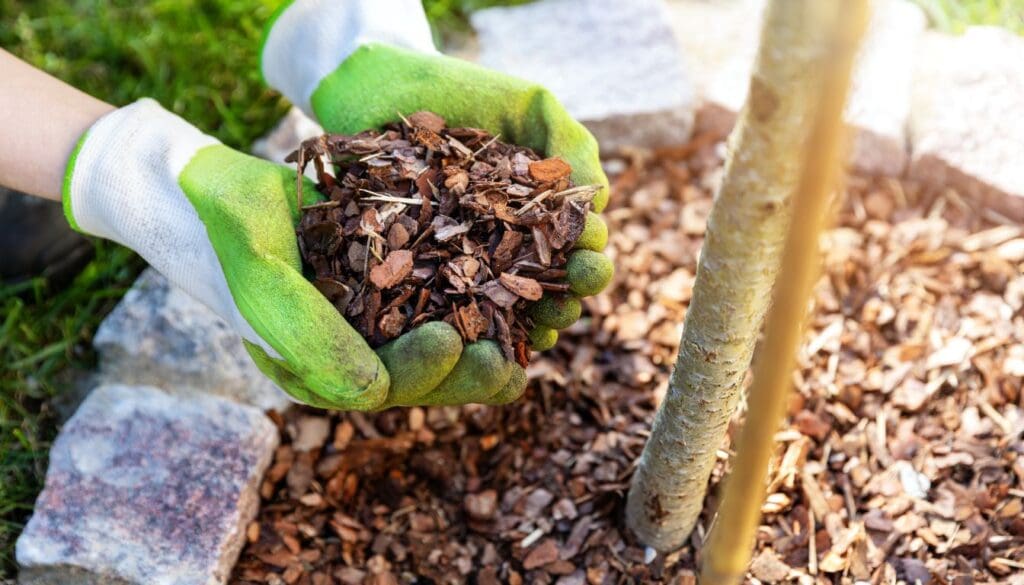
I always throw down mulch in the summer. It keeps the soil moist by blocking sun and slowing evaporation.
When I mulch, I don’t need to water as often. The mulch acts like a little shield, keeping roots cool even when it’s roasting outside.
I usually go for natural stuff—wood chips, straw, or leaves. They break down and add nutrients to the soil. I aim for a 2-3 inch layer but keep it away from stems.
Mulch also keeps weeds in check, which means my plants get more water. Plus, the garden just looks tidier, making it easier to spot problems.
For potted plants, I add mulch on top of the soil too. It works just as well for containers.
Mulch can make a huge difference in how often I need to water in summer. It’s a simple step that saves me time and sanity.
5) Check soil moisture with your finger before watering

I always check soil moisture with my finger before watering. It’s a quick way to avoid overwatering or underwatering—no fancy tools needed.
I poke my finger about one or two inches into the soil. If it’s dry down there, it’s time to water. If it still feels a bit damp, I hold off another day.
Using my finger is just more reliable than guessing by looking at the surface. That top layer dries out way faster than the roots.
This saves water and keeps plants healthier. Too wet or too dry, and plants get stressed—nobody wants that in the heat.
I check a few spots in bigger pots, since soil dries unevenly sometimes. A quick finger test really works for all kinds of plants, indoors or out.
It’s a simple trick, but honestly, it makes me feel way more confident about plant care, even on the hottest days.
6) Avoid overhead watering to reduce evaporation

I try hard to avoid overhead watering in summer. Sprinklers or spraying from above just wastes water—most of it evaporates before it even hits the roots.
I’d rather water at the base. That way, the soil gets the moisture right where roots need it. Plus, dry leaves mean less risk of disease.
Using a watering can or drip hose keeps things tidy and targeted. I notice the soil stays moist longer, and my plants look healthier.
Overhead watering on sunny days is just not worth it. Water droplets can even heat up and stress the plant more.
By watering low and slow, every drop counts. My garden gets what it needs, and I waste less water.
7) Adjust watering frequency based on plant type

I always pay attention to what kind of plant I’m dealing with—every plant has different watering needs. Succulents need less water, while ferns and similar plants need more.
With succulents and cacti, I usually water just once every two weeks in summer. Their thick leaves hold water, so I let the soil dry out between waterings.
Flowering plants and veggies often need water more often, especially in hot weather. I check their soil every day, and if it’s dry an inch down, I water.
Big leafy plants like peace lilies or pothos need a steady schedule. They might need a drink every few days, especially if they’re in the sun.
Outdoor potted plants dry out fast, way faster than those in the ground. I check them daily, and if the top soil is dry, it’s time to water.
Herbs like basil and mint like their soil a bit damp, but not soggy. I keep an eye on them in the heat—they wilt quickly if they dry out.
Tracking each plant’s needs helps me avoid headaches. I use my phone or a notebook to keep things simple. This way, my plants stay happy through summer.
Understanding Plant Water Needs in Summer
When I water in summer, I pay close attention to how heat changes the soil. I also watch for signs that my plants are getting too much or too little water.
How Temperature Affects Soil Moisture
Summer heat can dry out soil way faster than you’d think. Pots in sunny spots—especially dark ones—lose water the quickest. Light, sandy soils dry out even faster, so those plants get thirsty more often.
I check the soil early in the morning. If I push my finger in an inch and it’s dry, time to water. Sometimes it dries out much sooner than I’d expect.
Mulch helps me hang onto soil moisture. I just spread a layer of bark or straw to slow down evaporation and keep roots cooler. That means I don’t have to water quite as often.
Recognizing Signs of Overwatering and Underwatering
If my plant’s leaves turn yellow and limp, it’s probably getting too much water. Soggy soil, mold, or a musty smell are also warning signs.
On the flip side, crispy, brown edges or wilted leaves usually mean it’s underwatered. If the soil pulls away from the pot’s edges or is dry deep down, that’s another clue.
To keep it simple, here’s what I look for:
- Yellow, limp leaves = Overwatering
- Crispy, brown edges = Underwatering
- Soggy soil or mold = Too much water
- Dry, shrinking soil = Not enough water
By checking these, I make sure I’m only watering when my plants actually need it.
Best Practices for Successful Watering
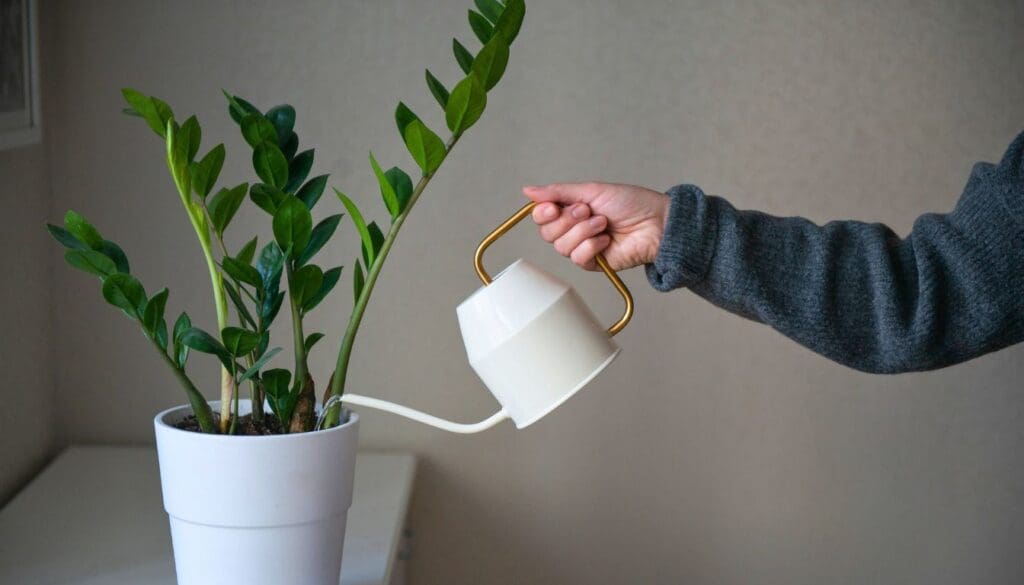
Honestly, I get the best results when I focus on timing and how I water. It’s not just about giving plants a drink—it’s about making sure they get it when and where they need it.
Choosing the Right Time of Day
Honestly, I’ve found that watering early in the morning just works best. The soil gets a chance to soak up moisture before the sun comes out and starts stealing it away.
Watering when it’s still cool means the plants don’t get stressed or scorched. If I miss the morning window, evening is my backup plan.
Late-day watering lets roots soak things up, but only if the leaves have time to dry before nightfall. Damp leaves overnight? That’s just asking for pests or disease, so I try to avoid it.
I steer clear of watering in the middle of the day when the sun is blazing. Most of the water just disappears, and the plants don’t really get what they need.
Tools and Techniques for Even Water Distribution
Giving each plant what it needs means picking the right tools. For small gardens, a watering can with a sprinkler head does the trick.
If I’m dealing with bigger beds, I go for a soaker hose or a drip irrigation system to get water straight to the roots. I always check the soil to make sure moisture is reaching all around, not just pooling on top.
Watering slowly and deeply helps, so nothing just runs off or sits uselessly. I like to throw some mulch on top too—it keeps moisture in and cuts down on splashing.
Here’s a quick reference:
| Tool | Best For |
|---|---|
| Watering can | Small gardens, pots |
| Soaker hose | Larger beds |
| Drip irrigation | Rows, vegetable beds |
Little changes like these really do help keep my plants happy, even when it feels like the sun won’t quit.
Frequently Asked Questions
Honestly, just having a few good habits makes a world of difference in summer. Watering at the right time, using decent tools, and paying attention to what your plants are telling you—it all adds up.
What’s the ideal time of day to water my garden during a hot summer?
I always water early in the morning, just before the sun comes up.
That way, the soil gets a good drink before the heat hits. It also keeps plants a bit cooler when things get intense later in the day.
How often should I water my outdoor plants when the temperature rises?
When it’s hot, I go for a deep soak every 3 to 4 days instead of watering daily.
This helps roots grow deeper and keeps the soil moist longer. I usually poke a finger into the soil to check if things are actually dry before dragging out the hose.
At what temperature should I avoid watering my plants to prevent damage?
If it’s over 90°F (32°C) in the afternoon, I just wait.
Water on leaves can heat up and hurt them in direct sun, so I stick with early mornings or wait until the evening cools things off.
Can watering my plants twice daily benefit them in extreme heat?
Honestly, watering twice a day isn’t really necessary, even when it’s scorching.
I’d rather give them a deep soak every few days than mess with shallow watering that dries out fast and doesn’t help roots much.
Are there specific watering tips for root vegetables, like carrots, in the summer?
For carrots and other root veggies, I always add mulch to keep the soil cool and damp.
I water deeply but not too often, so the roots get what they need without drowning.
And I try to be gentle—no one wants rock-hard soil packed in around their carrots.
What adaptations do plants that conserve water have in hot climates?
Some plants—think succulents—have thick leaves that let them store water for those long, dry stretches.
Others? They’ve got small or waxy leaves, which really helps cut down on water loss.
Honestly, I always look for plants like these when a heatwave’s on the horizon. They just don’t need as much attention and seem pretty happy in dry, sunny corners.
Recommended Garden Supplies
| Product Image | Our Recommended Gardening Supplies | Check Offers! |
|---|---|---|
Top Top
Top
Top
Top
Top
Top
Top
Top | rePotme Houseplant and Tropical Classic Potting Soil Mix | Check Offer On Amazon |
 Top
Top
Top
Top
Top
Top
Top
Top | Espoma Organic Indoor Plant Food | Check Offer On Amazon |
 Top
Top
Top
Top
Top
Top
Top
Top | GooingTop LED Grow Light 6000K Full Spectrum Clip Plant Growing Lamp | Check Offer On Amazon |
 Top
Top
Top
Top
Top
Top
Top
Top | Soil Moisture Meter | Check Offer On Amazon |
 Top
Top
Top
Top
Top
Top
Top
Top | Govee Hygrometer Thermometer, Bluetooth Enabled! | Check Offer On Amazon |
 Top
Top | LEVOIT Humidifiers for Large Room(Best For Plants) | Check Offer On Amazon |
 Top
Top
Top
Top
Top
Top
Top
Top | Upgraded DIY Automatic Drip Irrigation Kit, 15 Potted Houseplants Support | Check Offer On Amazon |
 Top
Top
Top
Top
Top
Top
Top
Top | Stainless Steel Heavy Duty Gardening Tool Set | Check Offer On Amazon |
 Top
Top
Top
Top
Top
Top
Top
Top | Bonide Insecticidal Soap | Check Offer On Amazon |
 Top
Top
Top
Top
Top
Top
Top
Top | Bonide 32 oz Spray Neem Oil for Organic Gardening | Check Offer On Amazon |
 Top
Top
Top
Top
Top
Top
Top
Top | Garden Safe Fungicide | Check Offer On Amazon |




